プロジェクトProjects
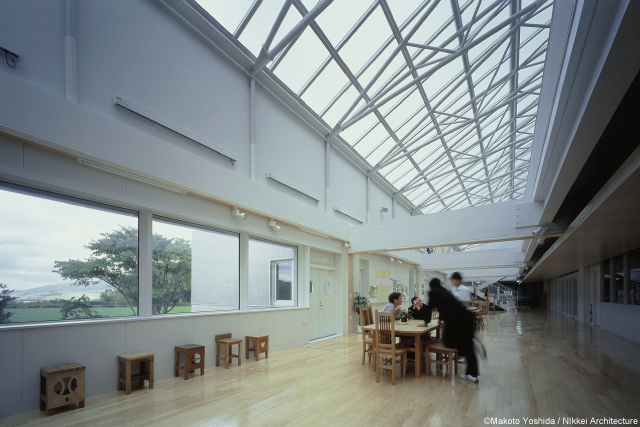
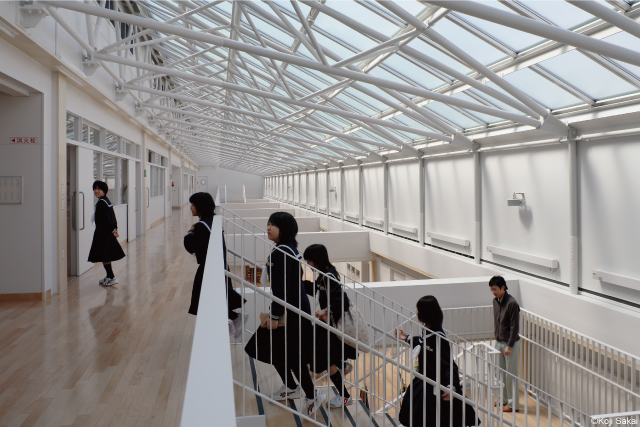
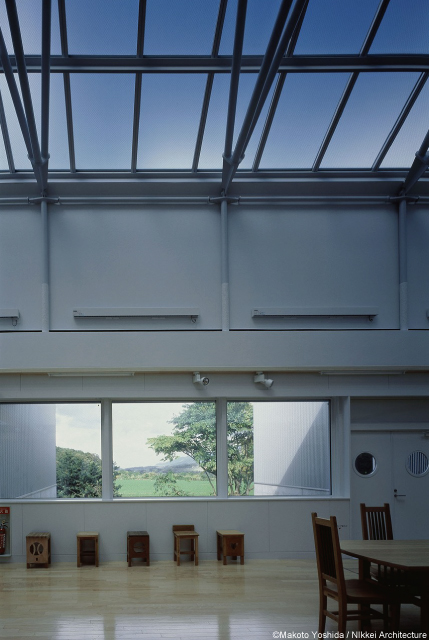
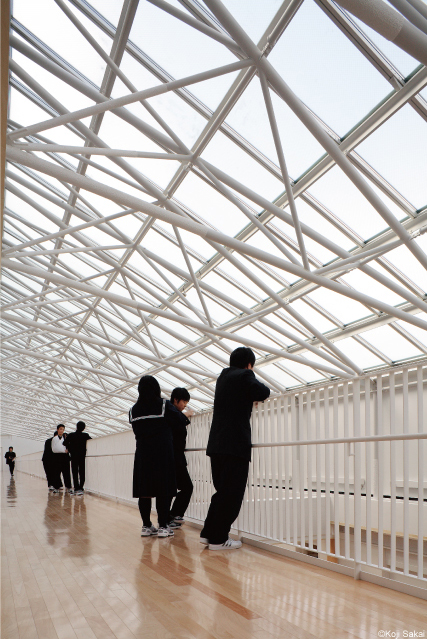
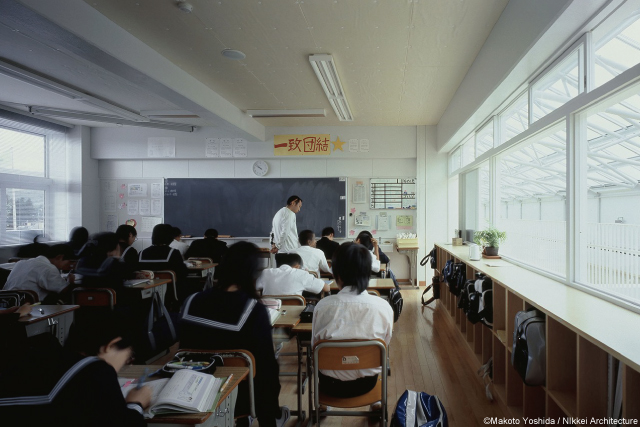
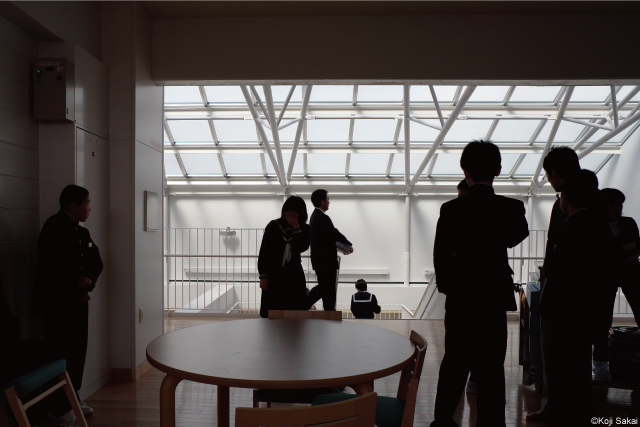
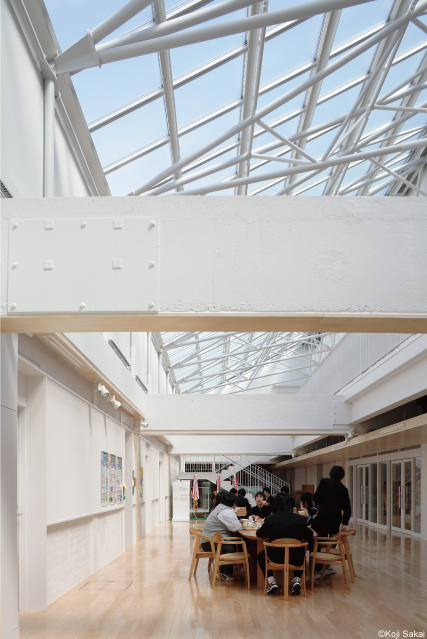
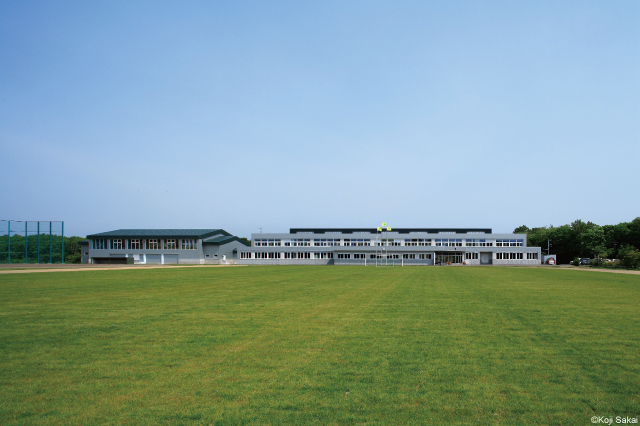
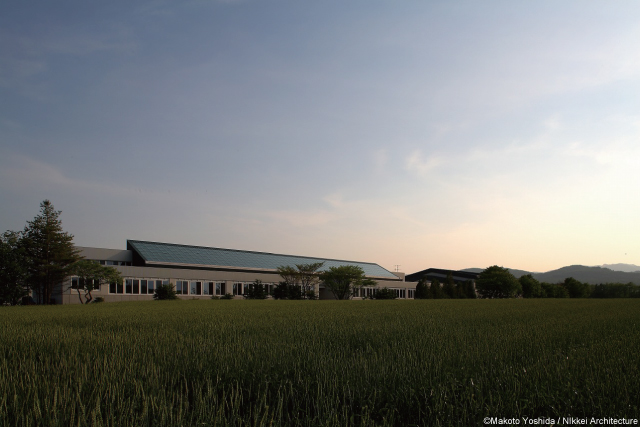
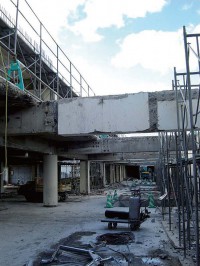
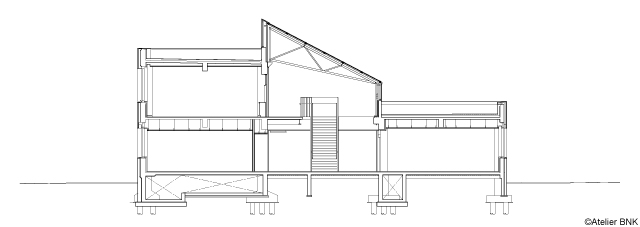
黒松内中学校 エコ改修
2007
北海道寿都郡黒松内町
構 造:鉄筋コンクリート造 + 鉄骨造
階 数:地上2階
延床面積:2,644㎡( 校舎部分 )
金箱構造設計( 構造設計 )
北方建築総合研究所( 環境アドヴァイザー )
アトリエブンク + 総合設備計画( 設備設計 )
高橋三太郎( 家具 )
西馬昇一郎( 家具 )
1978年竣工のRC2階建て校舎を大規模改修することで、さらに20年以上にわたって使用していくことを目的としたプロジェクトである。生徒数減少によって生まれた余剰面積を再構成して、子どもたちにとってのくつろぎの居場所「ひかりのみち」をつくった。既存建物の屋根・床の一部を解体して上からガラス屋根を架けた吹抜け空間であるが、環境負荷削減と耐震性能向上にも寄与する空間である。
環境負荷削減の手法として、日照時間の短い地域特性を考慮して安定した天空光を屋根ガラスから取得することで、使用頻度の高い2階普通教室を中心に照明エネルギーを削減した。また夏季の南風を取得・排出する自然換気の経路を確保することで換気エネルギーを削減するとともに、外断熱による躯体保護で暖房エネルギーの削減と躯体の長寿命化を果たした。耐震性能に関しては、減築の手法によって屋根と2階床を解体し躯体重量を削減することによって性能を向上し、また杭基礎への負担を軽減した。
「ひかりのみち」をつくることで様々な問題を簡単に解決することができたが、それ以上に重要なのは、空間全体が自然光に満ち溢れた活動的な場に変容したことである。子どもたちの気分が明るくなるとともに、この手法をテーマにした環境教育が行われるなど、生きた教材として活用されている。
日本建築学会作品選奨
日本建築家協会環境建築賞優秀賞
北海道赤レンガ建築賞
北海道建築賞
日本建築学会作品選集2009
日経アーキテクチュア2007年11月12日号
建築技術2007年11月号
Kuromatsunai Junior High School Renovation
2007
Kuromatsunai-cho, Hokkaido
Structure:RC+S
Floor:2 floors
Floor Area:2,644㎡( School area )
Kanebako Structural Engineers( Structural Design )
Northern Regional Building Research Institute( Environmental Adviser )
Atelier BNK+Sogo Consultants( Mechanical & Electrical Engineering )
Santaro Takahashi( Furniture )
Shoichiro Nishiuma( Furniture )
This project aimed to extend the service life of this school building for a further twenty years or more through large-scale renovation of the 2-story reinforced concrete structure built in 1978. Our design reconfigured floor space that had become redundant due to a decline in student numbers, and created an area called the “Path of Light” where students can relax during the school day. This “Path of Light” is an atrium space where a portion of the roof and floor of the existing building has been dismantled and a glass roof installed. The space also serves to reduce the environmental load and improve the seismic performance of the building.
Taking into account the short hours of daylight in the region, our design succeeds in reducing lighting energy, mainly in the frequently-used regular classrooms on the second floor, by obtaining stable skylight through the glass roof. It also reduces the energy used for ventilation by maintaining routes of natural air circulation that capture and discharge southerly wind in the summer. The use of external heat insulation reduces heating energy and increases the life of the building frame. Seismic performance is improved and the load on the pile foundation reduced by downsizing, which involved reducing the weight of the building frame by dismantling the roof and the second story floor.
The “Path of Light” was the logical way to easily solve a number of problems, but more importantly, it transformed the entire space into a dynamic place filled with natural light. As well as making the students feel happier, the teachers use the architecture of the building as a “living” teaching resource to educate the students about the environment.
Annual Architectural Design Commendation, Architectural Institute of Japan
Japan Institute of Architects Sustainable Architecture Award
Hokkaido Red Brick Architecture Award
Hokkaido Architecture Award
Selected Architectural Designs of the Architectural Institute of Japan
Nikkei Architecture Dec. 11, 2007
Kenchiku Gijutsu Nov. 2007
